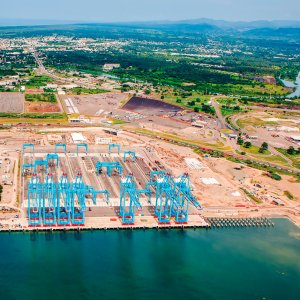Bringing Post-Tensioned Infrastructure to NAICM

STORY INLINE POST
POSTENSA is the leader in the construction of post- tensioned vertical structures. Its largest competitive advantage lies in its ability to innovate and its porfolio that includes more than 14 million m2 developed. As the Mexican real estate market continues to prosper, the firm continues to design and build corporate offices, schools, housing developments, hotels, and other commercial developments across the country.
Pablo Cortina, Director General of POSTENSA, sees a great deal of promise in the private sector, however, especially in the many mixed-use construction projects with hotels, commerce and housing which are being built all over the country includying Puebla, Cuernavaca, Queretaro, and southeast Mexico. “Although Mexico City and the metropolitan area continue to represent 40 percent of these opportunities, I see great strength in Monterrey as an emerging competitor,” he says. “We are involved in several projects, including some belonging to Fibra Uno.”
Cortina says that when the company initially introduced the post-tension system, POSTENSA found there was a lack of knowledge and a great amount of resistance to change. “This type of construction did not adhere to Mexico City’s construction regulations, so we had to perform a great number of studies to demonstrate this new technology not only complied with the codes, but it was a better alternative,” says Cortina. “We dealt with various misconceptions regarding the safety of the building structures and unnecessary expenses by demonstrating the contrary.” With a great deal of hard work, POSTENSA was able to eliminate the mistrust the construction industry felt toward post-tension.
Five years ago, POSTENSA constructed the first post- tensioned towers for wind turbines in the US, which measured 100m. This wind structure can support heavier machines that produce more energy. The Energy Reform also is opening doors at home. “Our first concrete wind structure in Mexican soil, constructed in Oaxaca, will be inaugurated in February 2017,” Cortina says. “The Energy Reform has set the wheels in motion but patience is required with these kinds of all-encompassing changes. The energy sector has many complex entrance barriers but we have 10 years of experience working in this segment.”
With such innovative construction systems, the company has plans to part take in the construction of the NAICM’s airstrips. The notorious intricacies the company must address include the difficult lakebed soil of ancient Texcoco Lake, where the airport will be located. The runways must be designed to sink levelly with the soil. POSTENSA already has performed trials on the lake, which Cortina says were successful.
Drawing on its 50 years’ experience in the post-tension construction segment POSTENSA can provide the technology necessary for the complex runways. Post-tension has been around for more than 100 years but POSTENSA introduced it to the Mexican market 25 years ago. “In post- tensioned systems, holes are drilled in a parabolic manner and when tightened, the pressure created makes the structure stronger,” Cortina says. “This system makes the structure sleeker and lighter. Using this system, we can save 10-15 percent of the value of the structure, which equates to 35 percent of the value of the entire building.”
POSTENSA improved the current Mexico City International Airport (AICM) airstrips using post-tensioned structures. “A post-tensioned system can hold large cargos, depending on how it is designed,” Cortina says. AICM has poor subsoil made of 80 percent water and 20 percent solids, meaning that anything that is placed on top will sink. Differential subsidence means that the AICM airstrips must be repaired every two years. “Our unique construction systems make the airstrip and the subsoil both weigh 1200kg/m2,” he says. A similar system has been designed for NAICM. “This means the airstrip does not sink unevenly but instead it sinks along with the entire Texcoco Lake, which is expected to sink by 50cm in the next 10 years.”






















